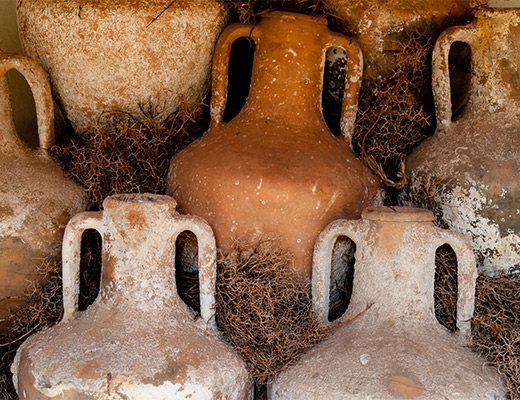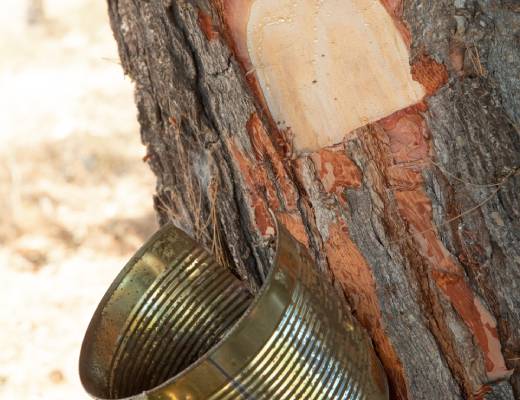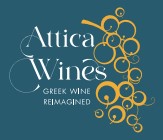Greece’s most famous and possibly most authentic wine is the traditional Retsina, with Attiki as the center of its production. Only specific regions can carry a Protected Geographical Indication (PGI) on the labels. (or ΠΓΕ in Greek). Retsina can also be produced throughout Greece and according to Greek and European legislation is labelled as a Traditional Designation (one of the two in Greece) if not produced within one of the designated PGI zones.
Among these regions, Attiki stands out by producing Retsinas that, under certain prerequisites, are classified in the category of Protected Geographical Indication, PGI Retsina of Attiki (ΠΓΕ Ρετσίνα Αττικής). It was only quite recently that Attiki has become the focus of Retsina production, being nowadays the most important producer of this renown traditional style of wine.
Retsina throughout the centuries
Ancient times
As evidence from historical texts and findings show, Attiki, and more specifically Mesogaia area, have been significant wine producing centers, since ancient times. In fact, during that era, wines from Attiki were exported to the various markets of the known ancient world. This has been proved by the hundreds of amphorae found in ancient shipwrecks of the Caspian Sea. These ceramic jars were used to store wines destined for export markets.
The ceramic jars were sealed with pine resin, a natural preservative of wine, in order to protect the wine during the long sea journeys both from spoilage and from oxidation. Inevitably, the strong flavor of the resin would leak into the wine. This eventually led to the creation of the first “Resin Flavored” wines, since consumers became fond of the taste of the resin and balsamic taste and aromas.
The famous Ritinitis wine (Retsina) is mentioned in the scriptures of Plebeius and Dioscorides. The art of adding resin as a natural antioxidant to wine was passed down to the Romans first and later to the Galatians.


More recently
Retsina experienced a huge growth during the 1960s, in the years following the Greek tourism “boom.” Retsina became synonymous with warm Greek summers, the blue Aegean and the seaside seafood-taverns serving local delicacies. For many people their first (and quite often only) taste of Greek wine was the distinctive pine-resin flavored Retsina.
If you ordered the less expensive wine at a tavern you would always be served Retsina, not realizing other wines may be available. As a result, Retsina was often the only wine memory that tourists took back home with them. Consequently this tart, pine-scented white wine became the equivalent of Greek wine for many decades.
For years, Retsina was closely associated with the Attiki region and this holds true even today. Easy access for Athenians to this style of wine made it the everyday charm of the local people. A long tradition was built and the ritual of opening the casks of fresh Retsina, has been a point of reference in the Athenian tavern. Delicious Greek appetizers (krasomezedes in Greek) accompanied these festive occasions.
A negative connotation
Unfortunately, although Retsina became the most recognized of Greek wines, this comparative advantage was not associated with quality. Retsina was usually a cheap wine, often oxidized and then flavored with resin to cover its inferior quality. So, it was understandable that Retsina became synonymous with low-priced wines of poor quality.
Much of these wines were sold in bulk, with resin added in order to mask any flaws from poor grape quality and dreadful winemaking, full of oenological “no-nos”. The wines were usually oxidized, bland, lacking freshness or balance. Resin was added in excess to overcome these faults, however as a result its strong aromas dominated over the wine aromas. Taking the above under consideration, someone could claim that, for decades, the pine-scented Retsina became both a blessing and a curse for the Greek wine industry.

